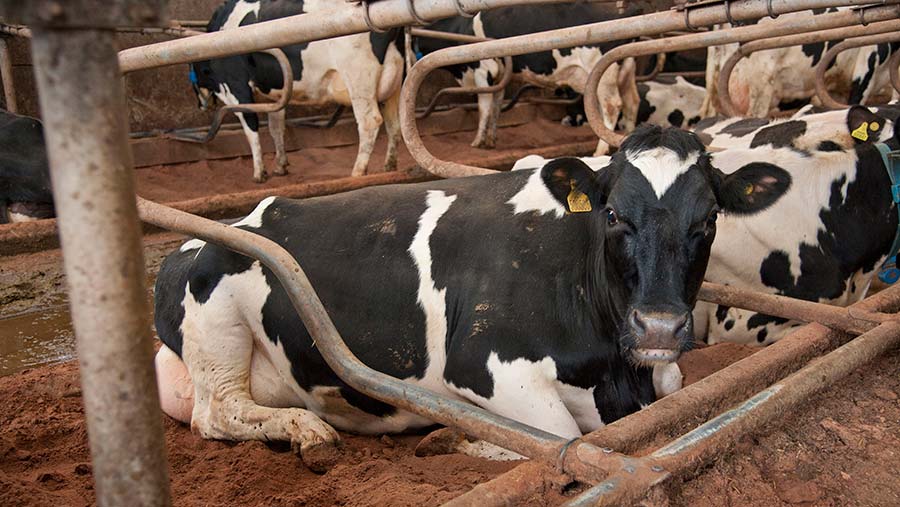4 must-dos for transition cow management
 © Tim Scrivener
© Tim Scrivener The three weeks before and after calving are important times for cows.
The dairy cow is more vulnerable and her metabolic needs increase dramatically.
Get the transition right and you can prime a cow for a healthy and productive lactation, but get it wrong and she can become an early cull candidate.
Dr Marina von Keyserlingk of the University of British Columbia (UBC) says there are four key areas which could help optimise transition cow welfare and minimise disease risk.
1. Provide plenty of feed space
- Provide a minimum of 76cm of feed space each in the transition period.
- Stock at 85% stocking rate in the three weeks before and the three weeks after calving.
2. Offer feed barrier protection
- Consider installing locking yokes to provide some kind of protection at the feed fence and prevent bully cows from pushing out subordinates, thus increasing dry matter intakes.
Why are 1 and 2 important?
Research on 101 cows at UBC found that cows which went on to develop metritis had reduced dry matter intakes one week before calving.
In healthy cows, intake dropped only the day before calving.
The greatest decline in intakes in cows that became sick was seen at peak feeding times (8am and 4pm).
Video footage showed that healthy cows spent more time at the feed fence, even if they weren’t eating, bullying other cows out of the way.
When sick cows were at the feed fence, they were likely to be eating. This highlights the importance of providing plenty of space and avoiding overstocking.
3. Provide a dry, soft bed
- Each cow should have dry, soft bedding to lie on.
- On farms where lameness is a problem, consider moving the neck rail so that it is slightly less “aggressive”, allowing cows to stand more easily in the cubicles. When doing so, cubicles will have to be cleaned more regularly to avoid udder contamination issues.
Why is this important?
Cows showed clear preference for lying in dry, fresh bedding, compared with very wet (33%) bedding in a preference test at UBC. A dry bed can thus help improve lying times.
Dr von Keyserlingk also said that because it could be difficult to find a dry place to stand in a cubicle shed, a cubicle itself could provide a spot for cows to get away. Her research has shown that this can help reduce lameness.
4. Regroup carefully
- Limit group changes.
- Regroup in pairs where possible.
- When adopting more regular group changes, space/stocking rate becomes even more important.
Why is this important?
Research has shown that it takes cows four days to return to their normal social behaviour after regrouping.
On the day of the move and the day after, a cow experiences an average 10-25 events where she is pushed out by another cow. On average cows showed a 4kg loss in milk on the day of regrouping.
